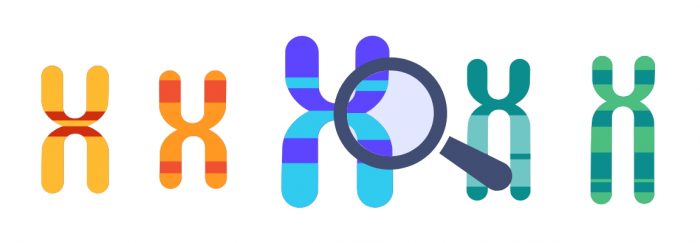A genetic test, or DNA test (as it is often called because it analyzes genes and DNA, if it analyzed proteins it would be a protein test), studies an individual’s genetic material to gather information about them. This information can range from their genetic predisposition to developing certain diseases, discovering their ancestry, or checking if they are carriers of specific pathologies. All of these are valid reasons to take a genetic (or DNA) test.
Genetic tests can be performed with any biological sample from a person that contains their DNA. We have all seen the classic CSI episodes where they managed to perform it through hair or skin. However, it can also be performed through saliva, blood, or other tissue. You could carry out a genetic test with something as small and easy to obtain as an arm (Surprising, I know!).
One of the advantages of these genetic exams is precisely that they are non-invasive. The person interested in knowing their genetic information only has to send their sample, which is usually saliva. The saliva sample is sent to a lab specialized in genetic analysis, and later, the results are received. Medical tests to detect the virus during the pandemic were more uncomfortable.
Another recent advantage is the lowering of the entire process’s cost. The cost of the process, from mass analyses to improvements in mathematical methodology and greater efficiency in analyses, has allowed a considerable drop in price, making it accessible to many people.

Materials and Methods
The DNA contained in an organism is its instruction manual. It contains everything its cells can do. And this instruction manual is different among different people, even though the functions are the same. This includes occasional typos and “spelling mistakes” that cause the manual to be poorly written, and the machine has problems functioning.
A genetic test can find these writing problems and interpret them.
And how can we interpret it? Thanks to previous studies that have analyzed the genetics of a certain population with a disease, for example, type I diabetes. If mutations in specific genes common to the entire population suffering from diabetes are found, it is concluded that if another person has that same mutation, the probability of suffering from diabetes increases.
First, we extract the DNA from the organic sample, and it is amplified to work with it (which is why the sample needs to reach a minimum of quality and quantity of DNA). After this amplification, genotyping is performed (a process different from genetic sequencing). Through this technique, the differences and similarities in the genes of the sample being analyzed are determined compared to the reference sequences. These reference sequences are the different gene variants we want to check.
Finally, from this methodology, we can know whether a person has the known mutations or not. And with that knowledge, the corresponding reports are prepared.
Results
Here we can differentiate between two types of diseases. On the one hand, complex diseases. These are diseases caused by multiple genes and environmental factors. The results about them are not telling us that we are going to suffer from the disease. It tells us the probability we have of developing the disease. Cancers, for example, would be in this group.
On the other hand, we have monogenic diseases. In this case, everything is due to a single gene. So the result is going to tell you if you are a carrier of the disease (whether or not you present the gene) and if you suffer from the pathology (since, in recessive genes, two abnormal copies of the gene are needed to have symptoms).
Above all, in complex diseases, interaction with the environment influences. Therefore, knowing the probability of suffering from a disease, we can modify the circumstances around us to prevent its appearance. Perhaps an incentive to quit smoking would be to know that our genes give us many chances for lung diseases.
Or with diabetes, if in the results I have a higher probability of suffering from it, I should control the diet avoiding the most sugary foods and drinks. Unless the idea of periodically injecting insulin seems interesting to us, but I doubt it.
As with any business idea with a wide niche of potential users, future opportunity, and possible ramifications, the result is many companies dedicated to the sale of genetic tests. Why us then?
Discussion and Conclusions
Because tellmeGen offers the most comprehensive genetic analysis on the market in relation to its cost. With just one saliva sample, we provide information about the genetic predisposition to suffer from more than 95 diseases (including the most popular ones, such as prostate cancer or Alzheimer’s disease), information about whether you are a carrier of any monogenic disease, we analyse the pharmacological compatibility in more than 100 drugs, we tell you personal traits (so you can prove that your eyes are dark green and not brown like everyone else says) and we add ancestry to finally convince you.
In conclusion, taking a genetic test provides you with very valuable information to better understand your body and your state of health. And doing it with us provides that very valuable information at a very valuable low price.
We recommend sharing this information with your medical professional if you have done the Advanced DNA Kit, as it can help in many aspects, from contributing to the early detection of a disease, to knowing what dose of a particular drug is most suitable for you. A little personalized medicine never hurts.
If you still have doubts about whether to get a genetic analysis or not, you can contact us at [email protected]. Are we going to try to convince you to do it? Yes. Are we convinced that it is useful and beneficial to do it, and that we are the best option? Also, honestly, yes.



